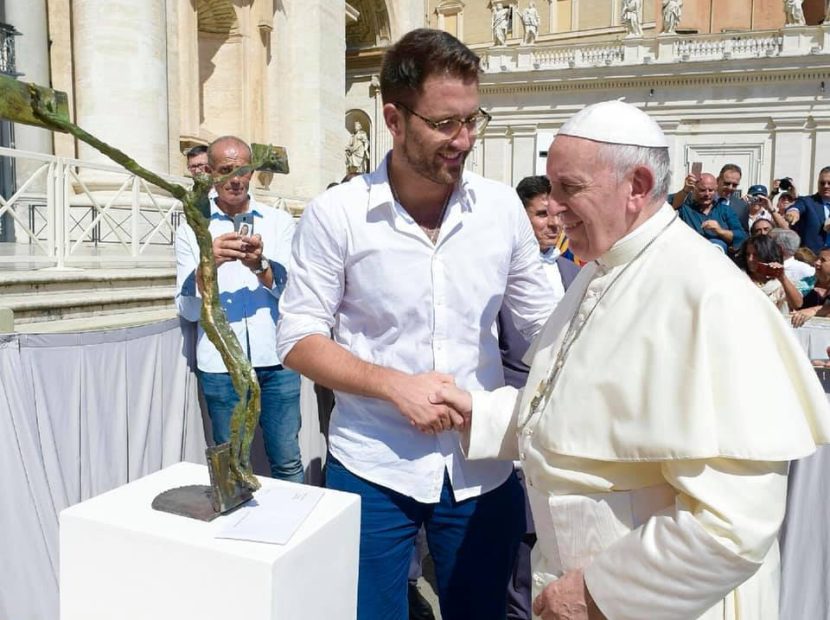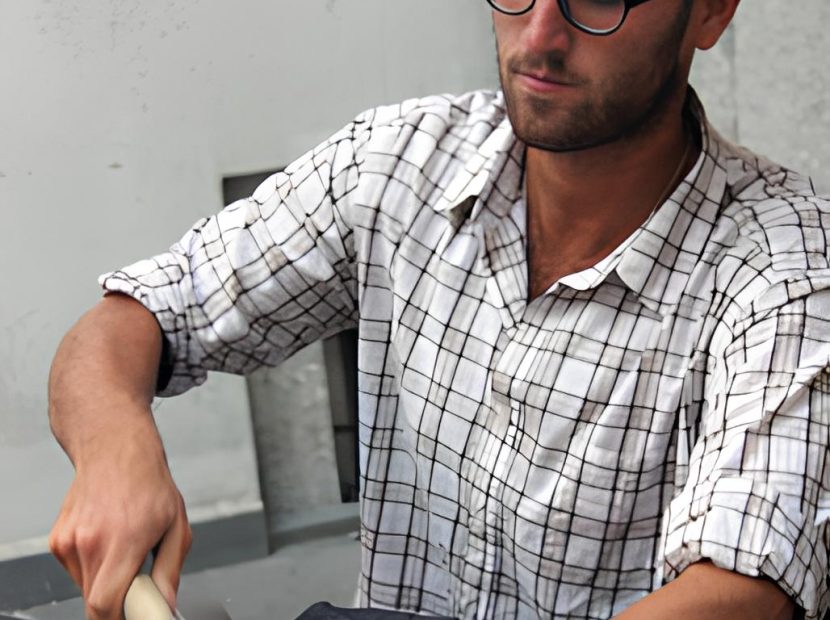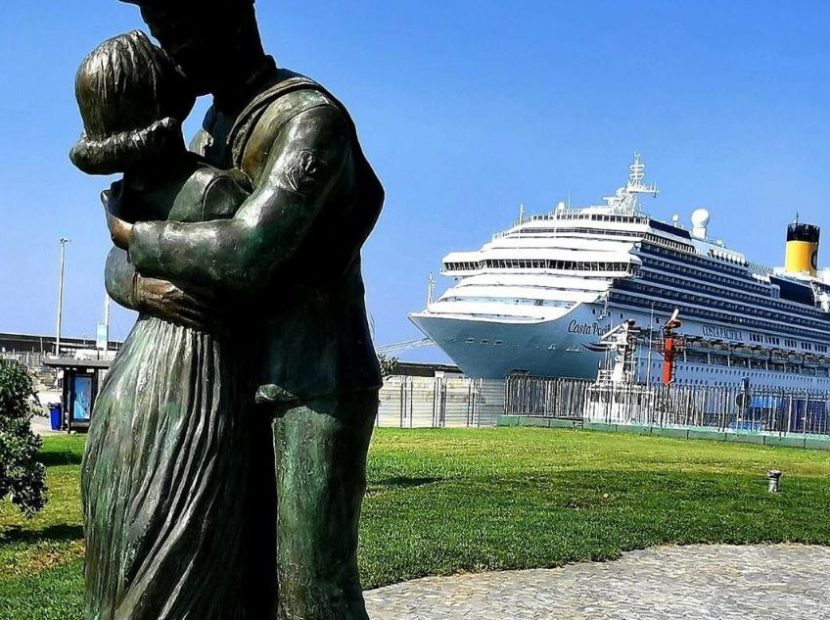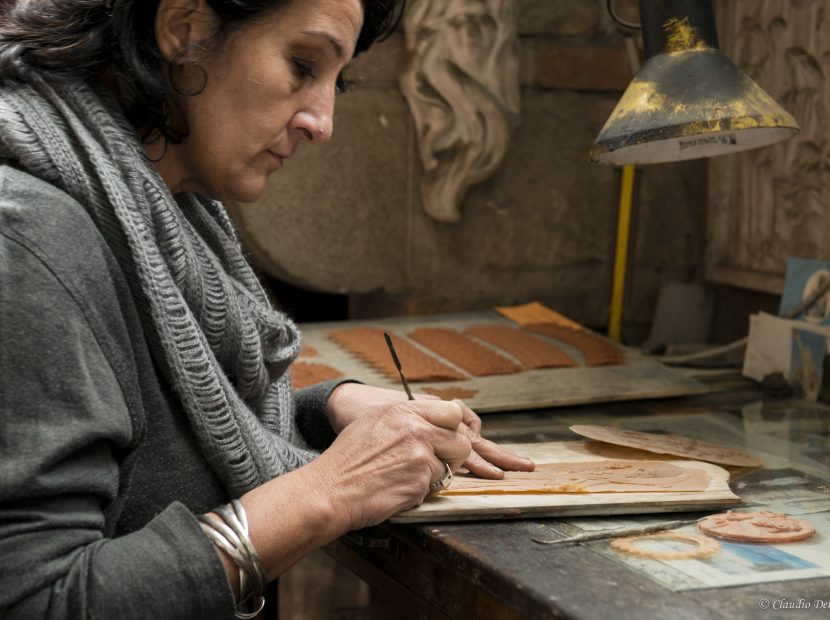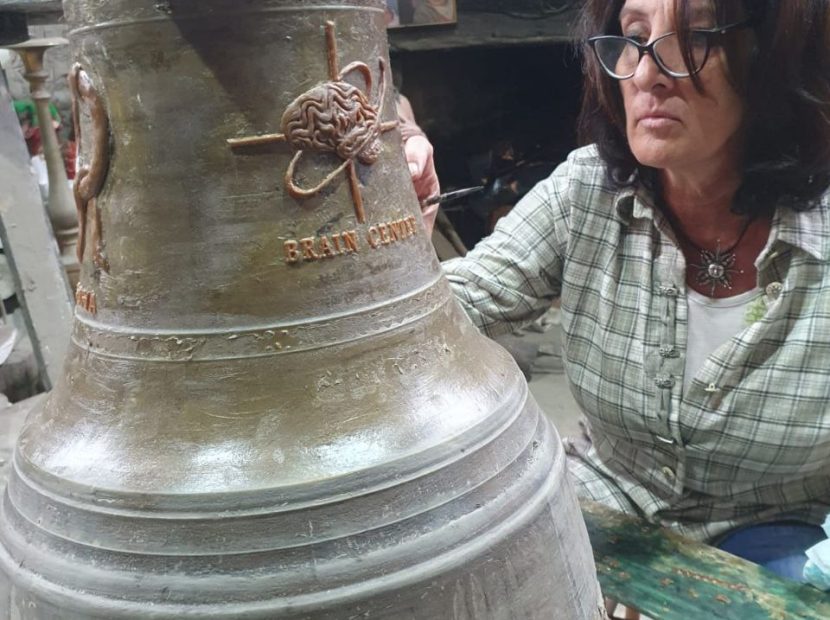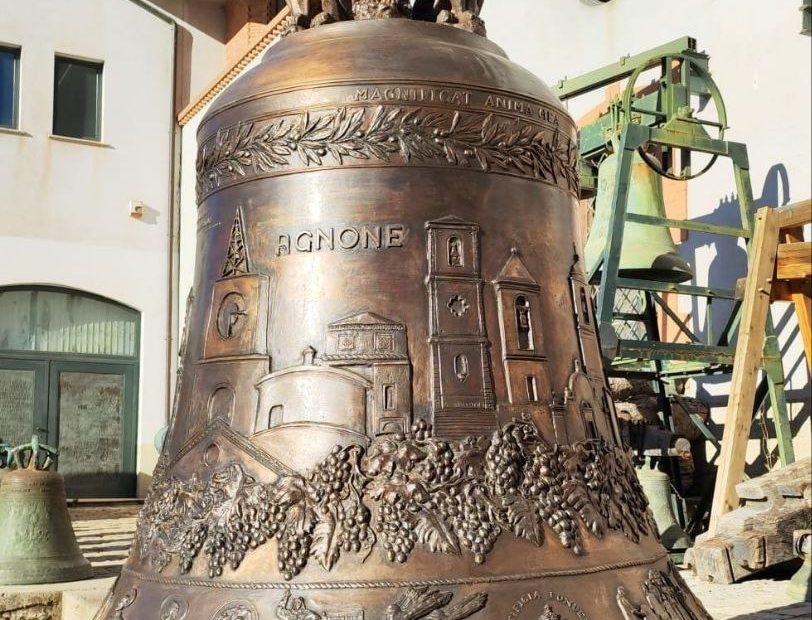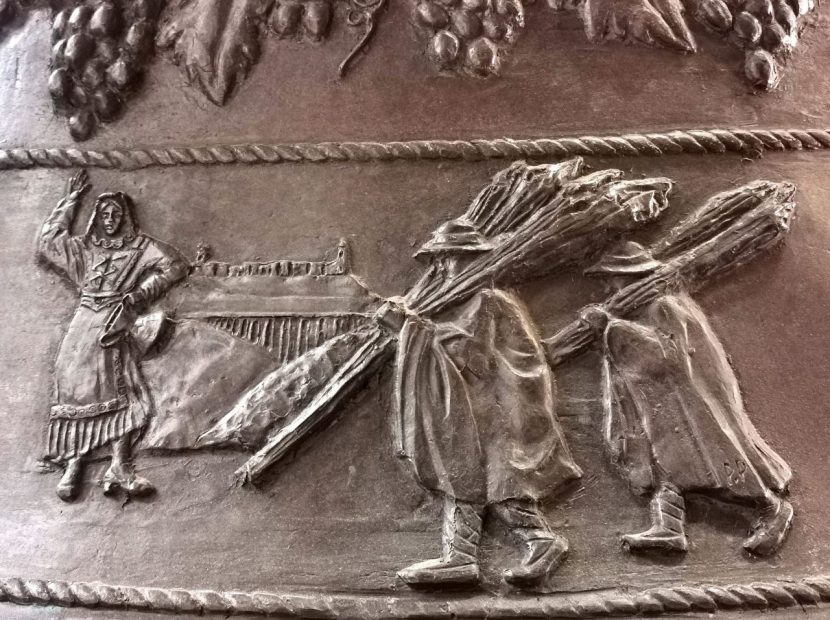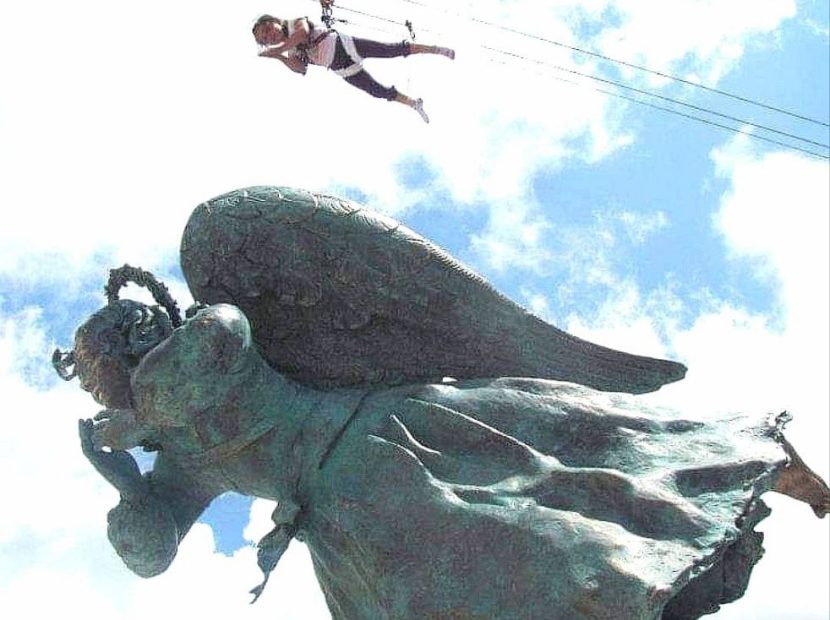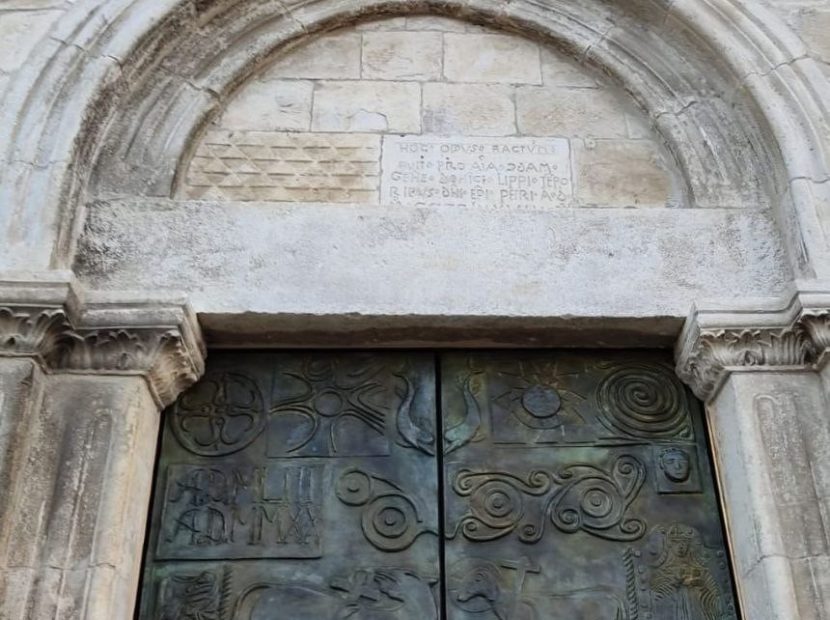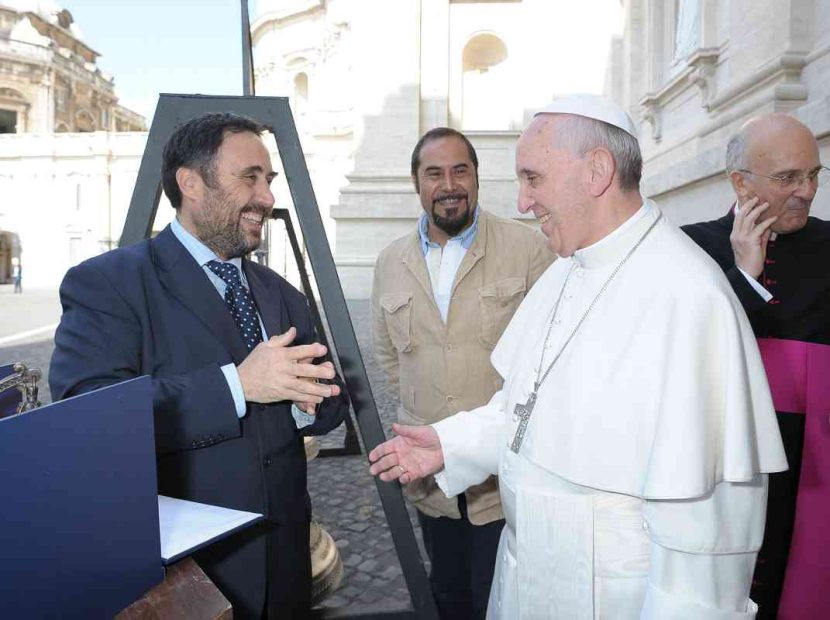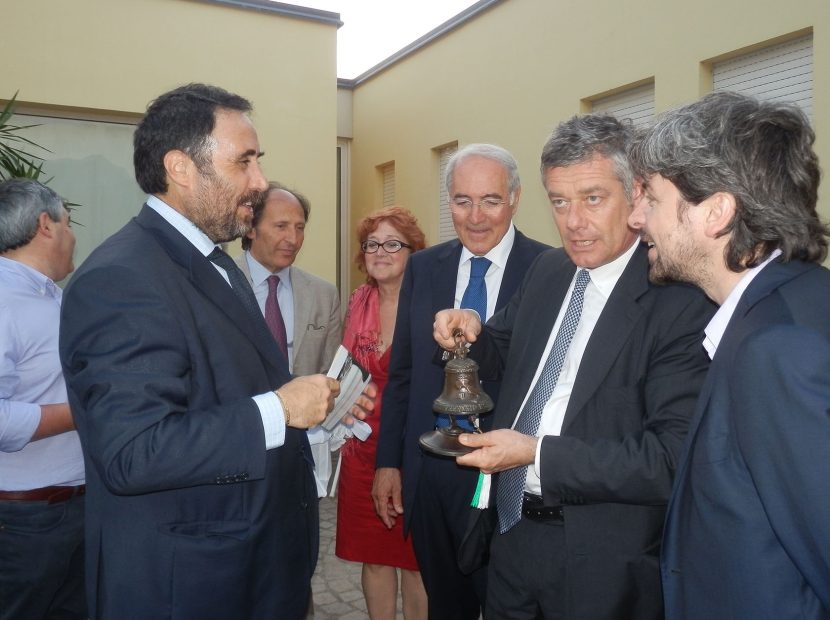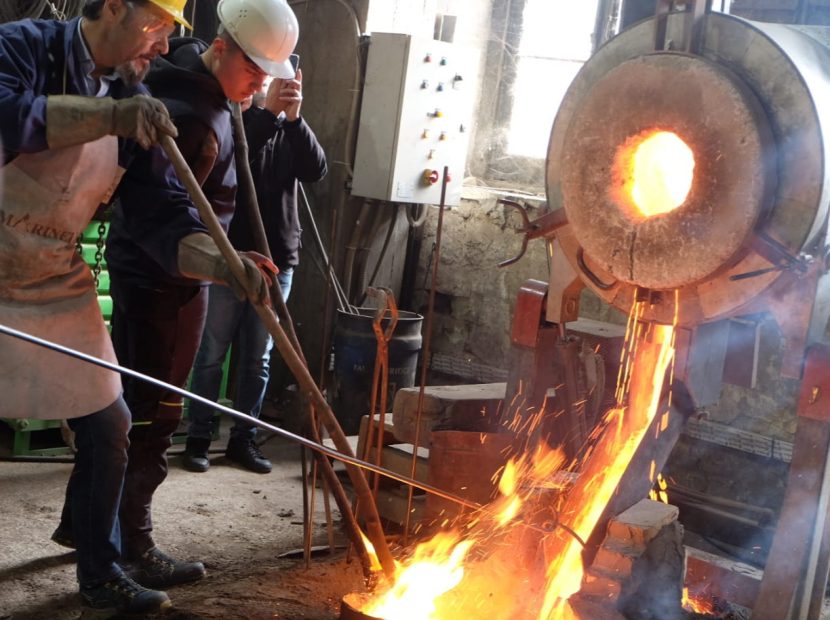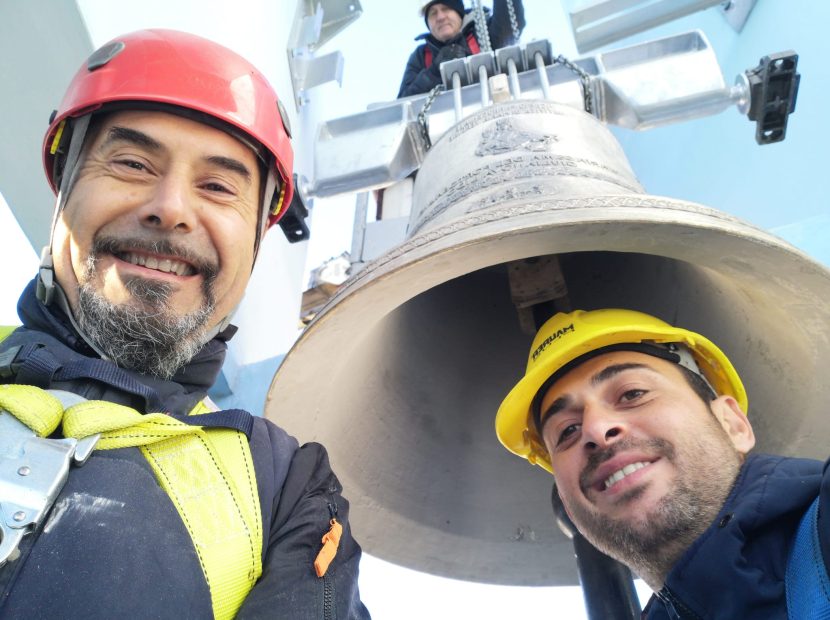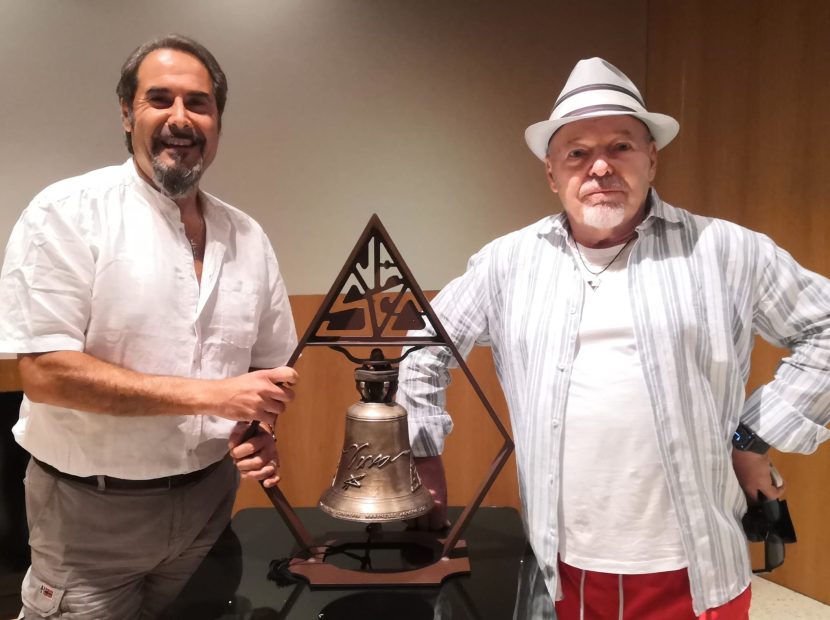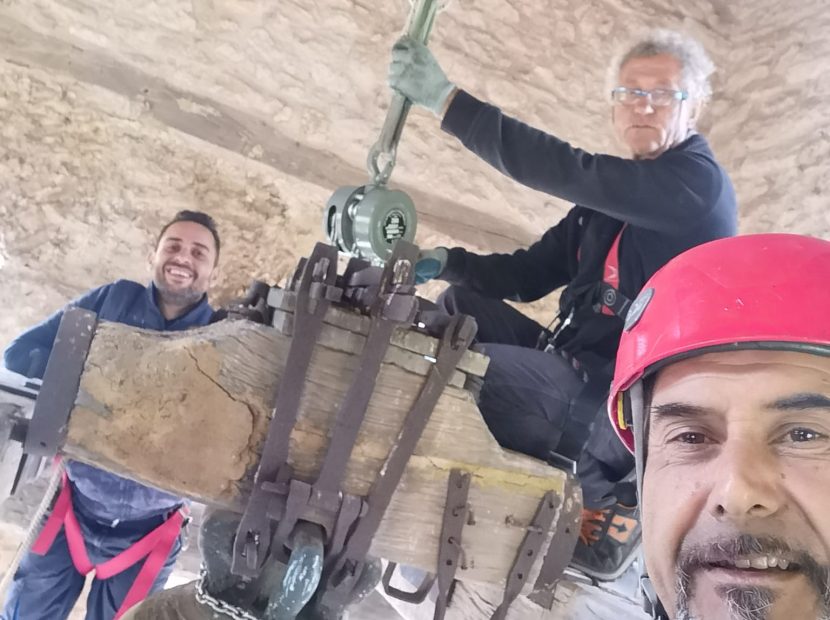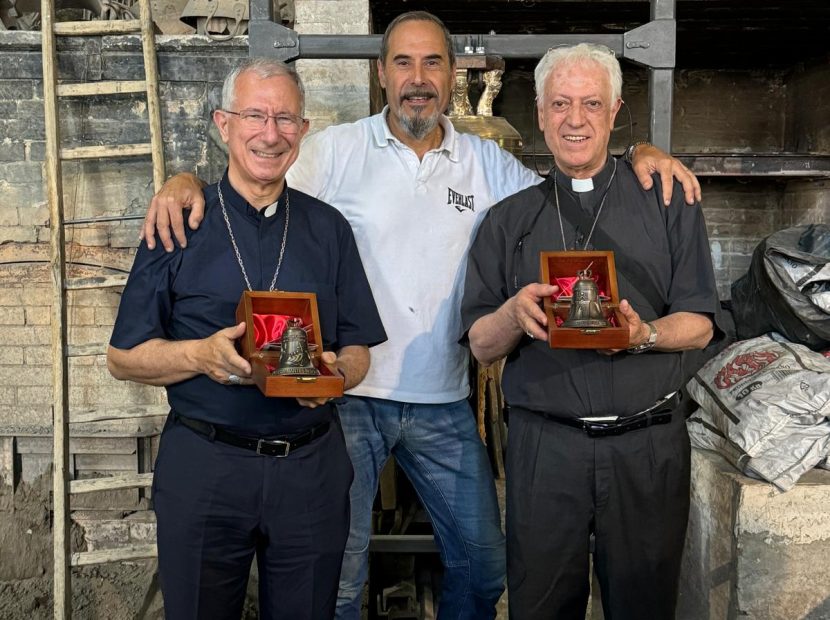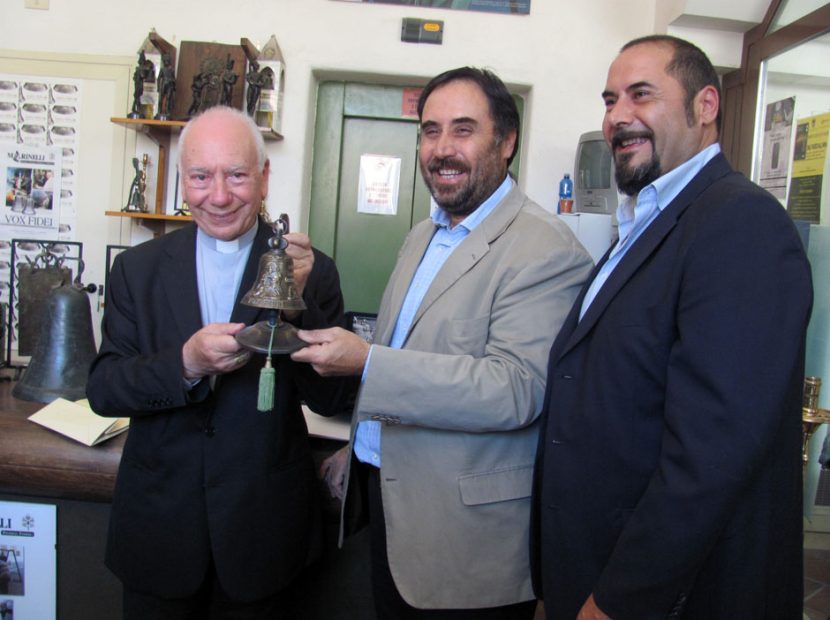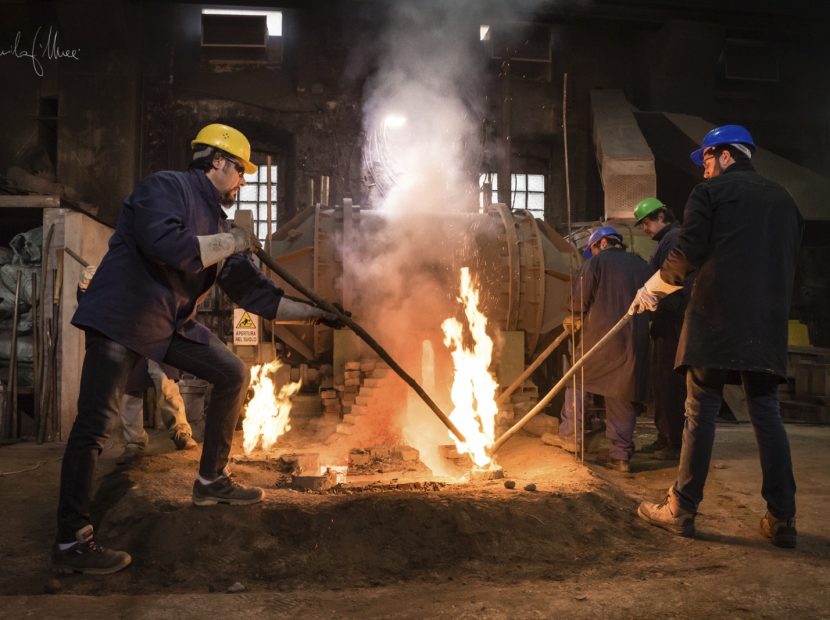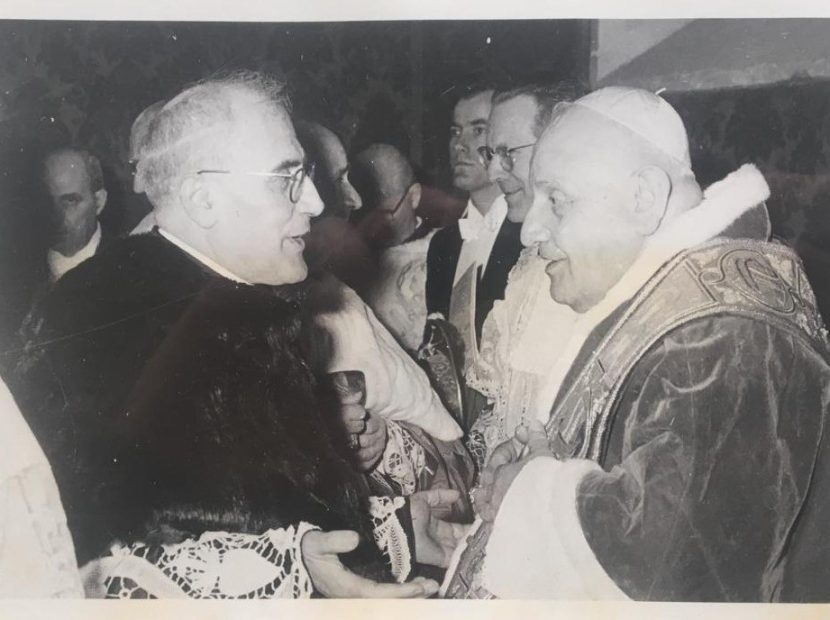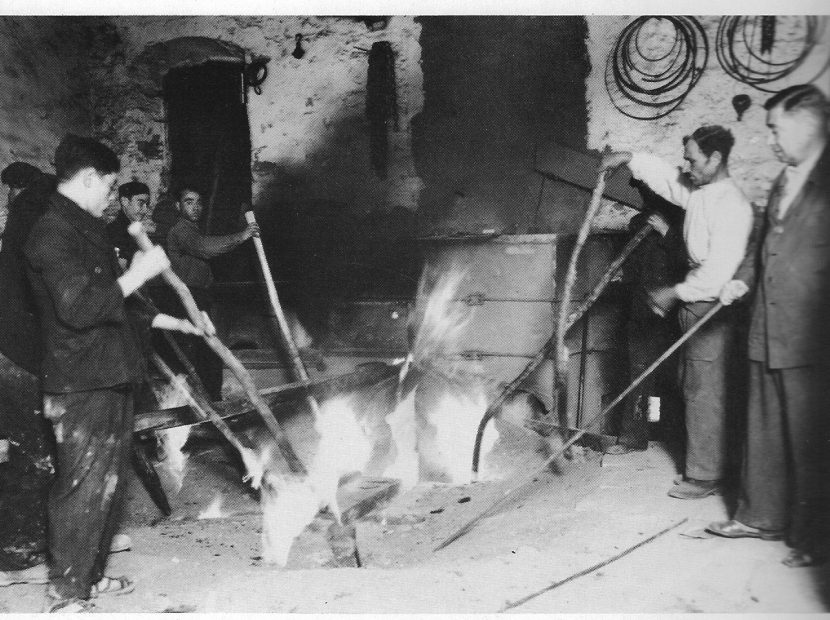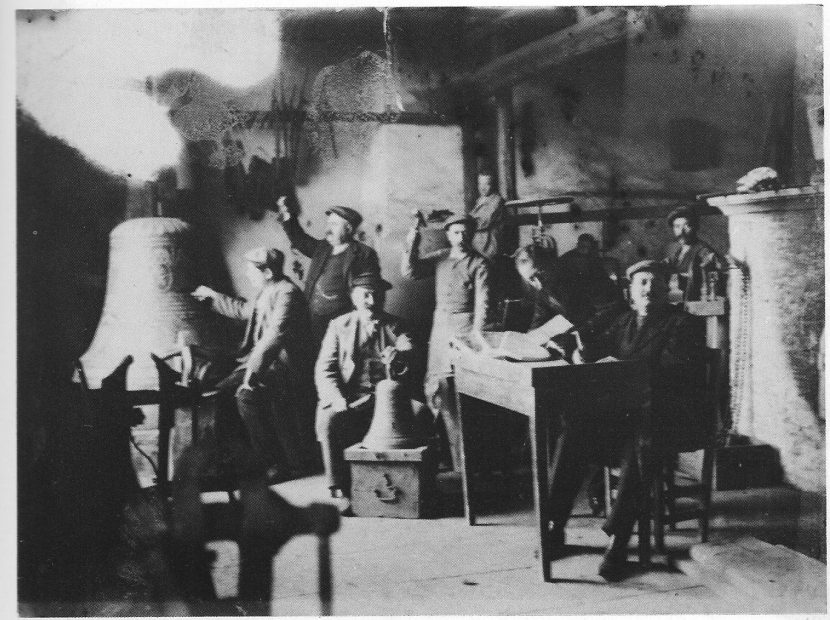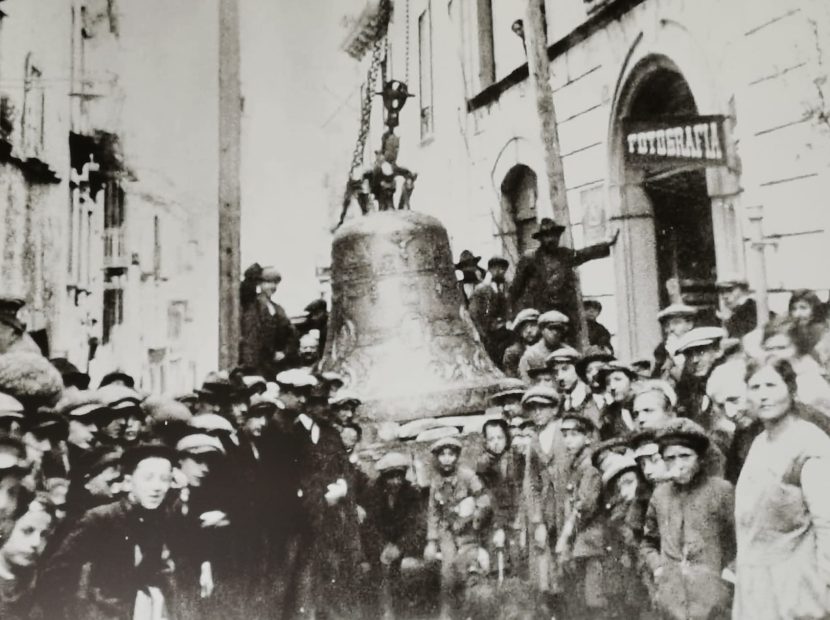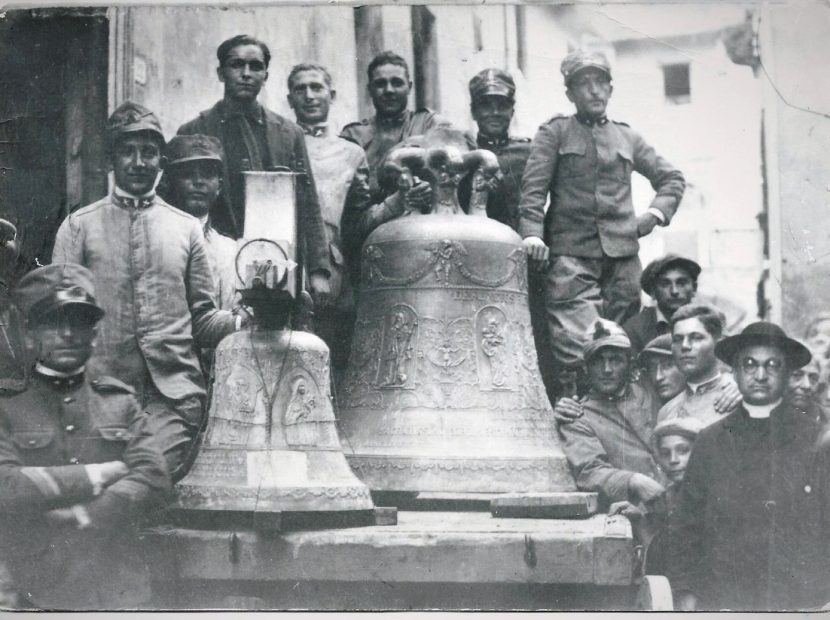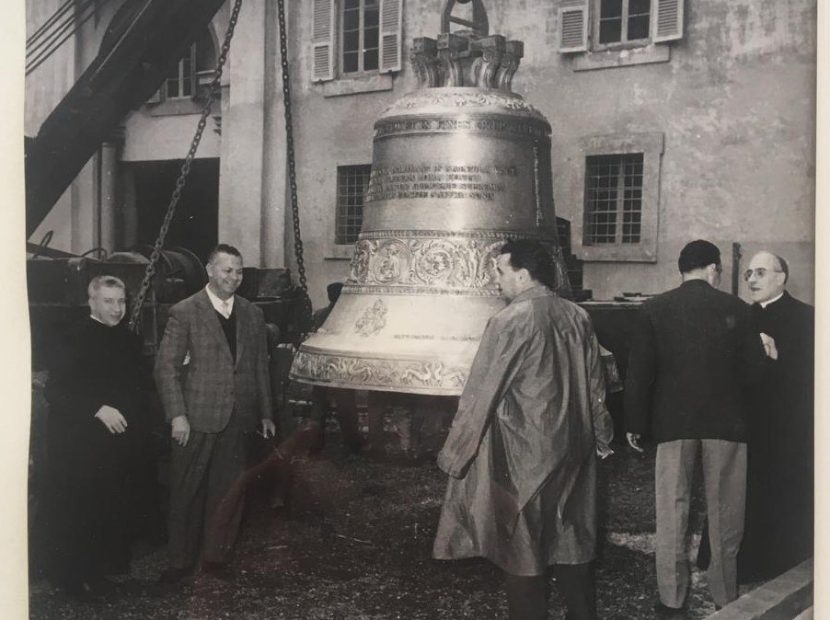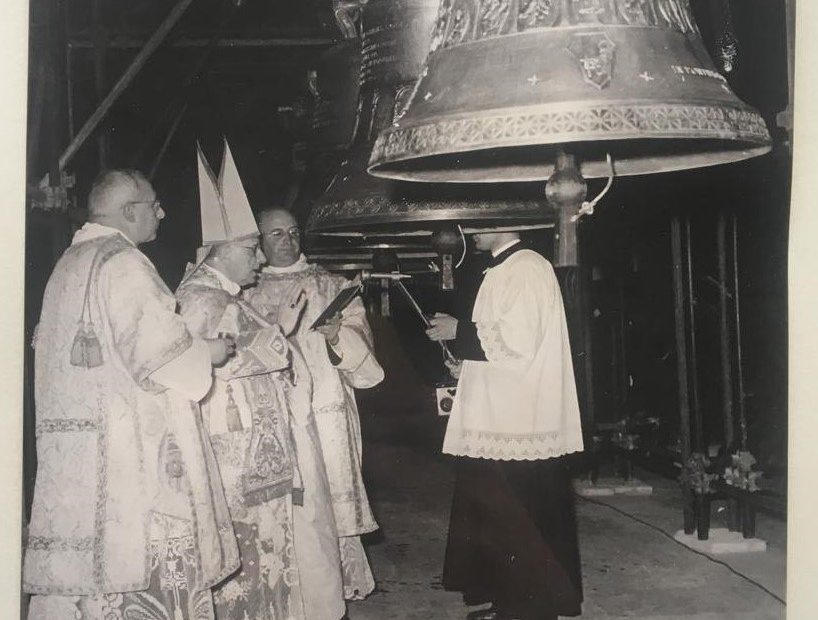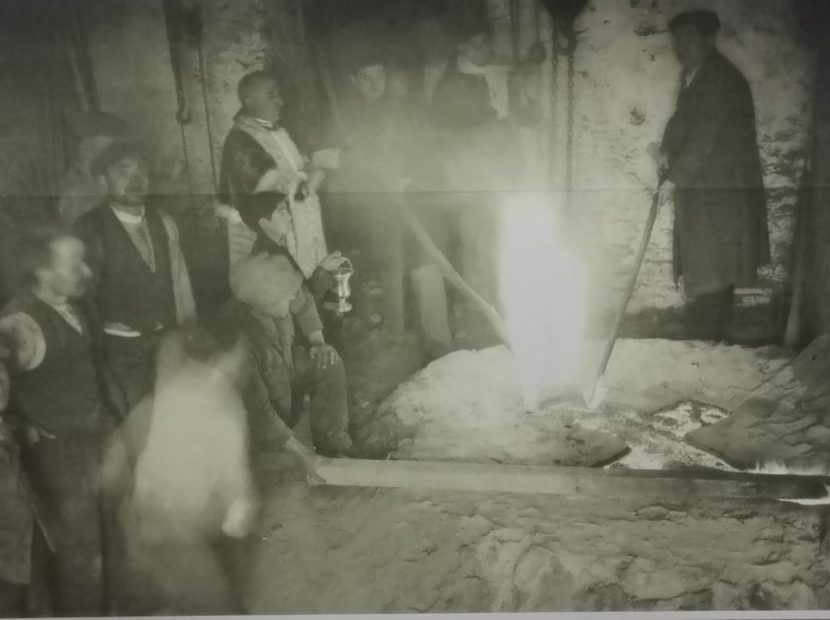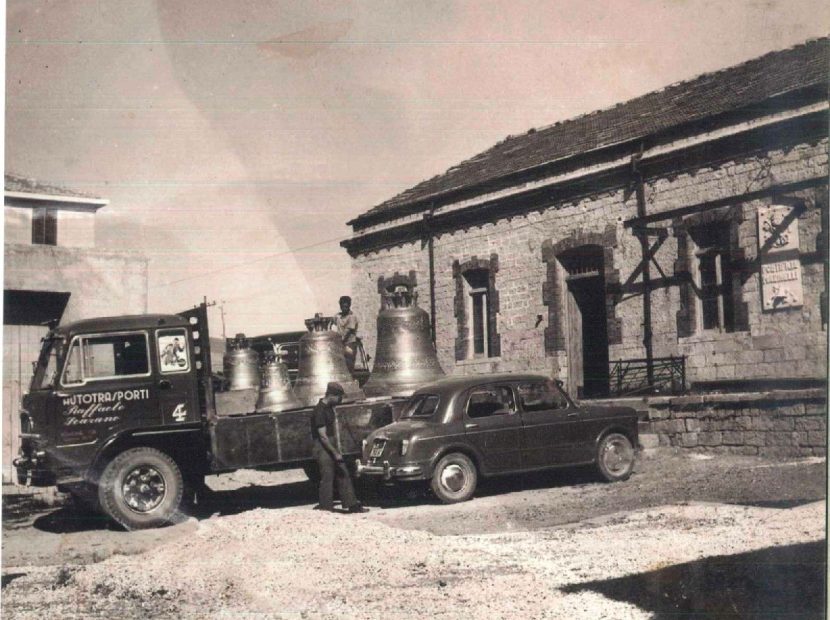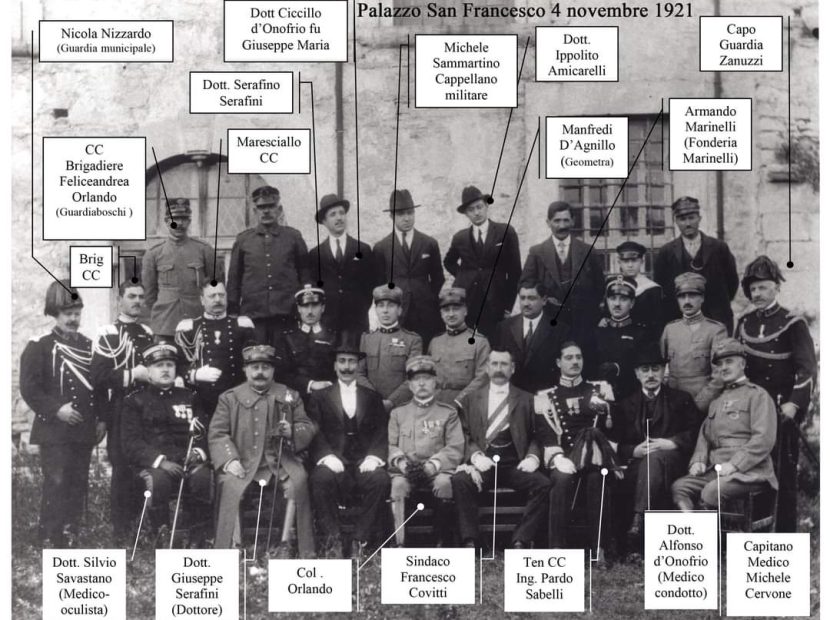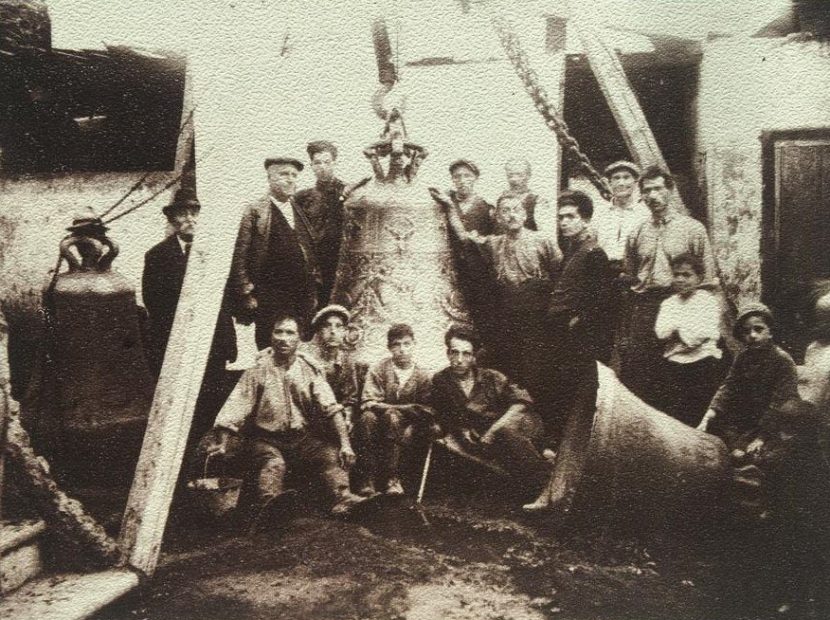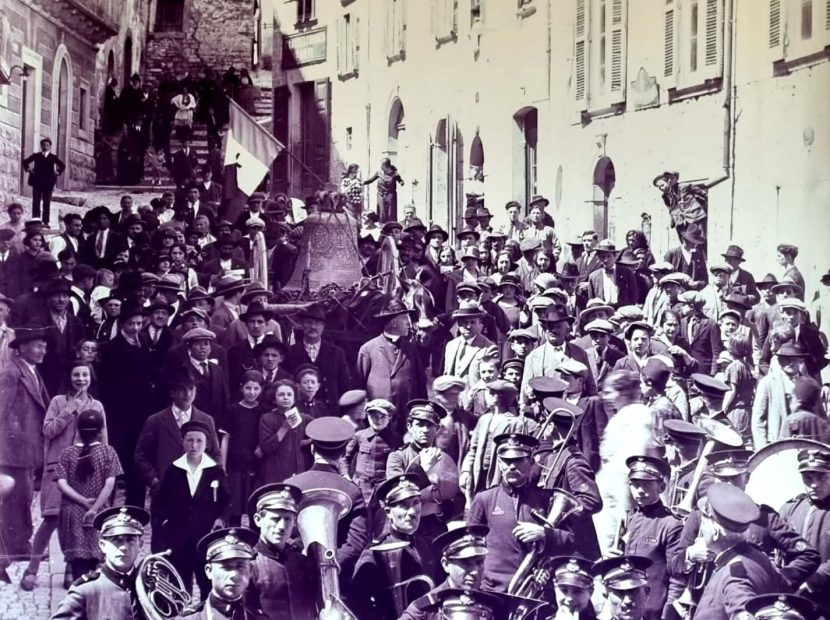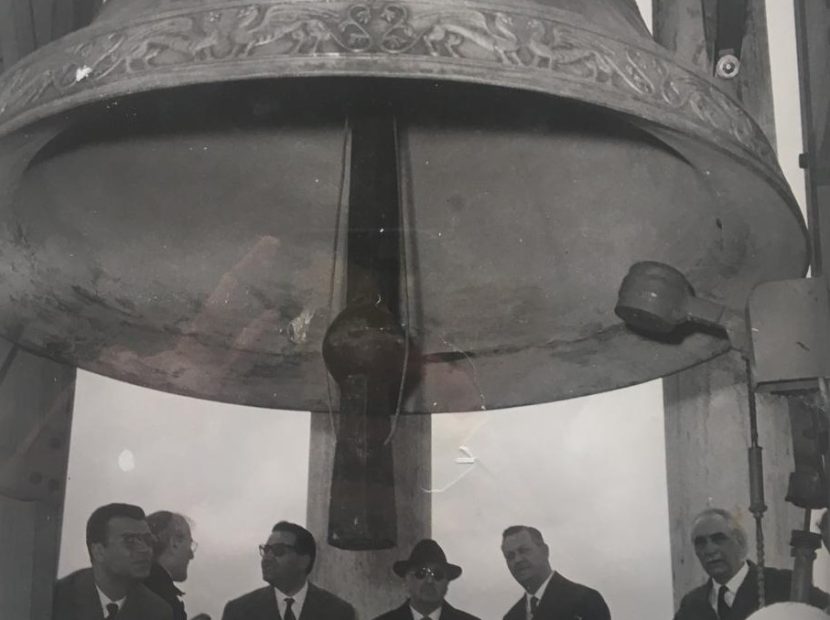Our family’s artists
Each bell is a work of art
The perfection of its sound and the beauty of its embellishments complete a bell. This customization makes each bell a unique and unrepeatable object achieved through exclusive and dedicated craftsmanship that does not allow for replicas. Casting a bell is in itself a very complex undertaking because it involves the donation of soul and sound to a living object. Renaissance artists, starting with Donatello, claimed that bell casters eternalized their works through their great sophistication and mysterious secrets that allowed the bronze to speak.
The Marinelli foundry has always recognized and made good use of the talent of each artist in the family, sending them to established schools to deepen their artistic knowledge and putting them to work in the foundry alongside the “senior” master-sculptor where, over time, they perfect their technique and style. Today the artists in the age-old workshop are Ettore Marinelli, a sculptor with extraordinary expressive qualities and the author of many impressive monuments located in very prestigious places, and his mother Paola Patriarca, who expertly molds splendid bronze doors and the bas-reliefs that personalize the bells.
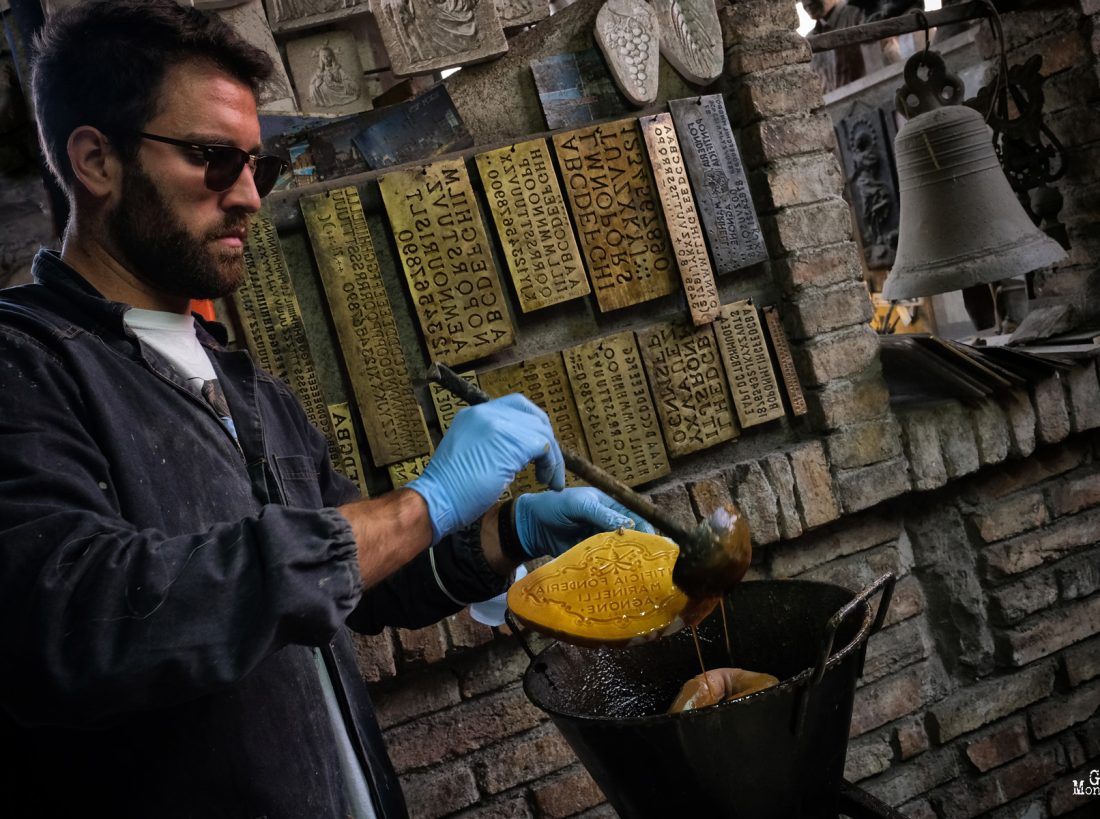
Ettore Marinelli Jr.
Ettore Marinelli was born in Agnone in 1991 into a long lineage of bell casters. As a child he enjoyed the aromas, sounds and materials of his forefathers’ age-old workshop and revealed a rare creative talent at a very early age, modelling clay into advanced shapes. His favorite subjects are humans and animals, for which he studies their anatomy as would a surgeon. He then “surgically” breaks this anatomy down into parts and recomposes it into imaginative forms. His style is made of modern, lively lines that are, at the same time, worn and antique. His creations intrigue and fascinate the viewer, leaving no room for indifference. Pope Francis once even asked an audience in St. Peter’s Square who the artist was who sculpted a dying Christ in essential and bold shapes. He called the artist out of the crowd and up to the altar to congratulate him. Even critic Vittorio Sgarbi came to meet Ettore personally and spent long hours in the workshop of this complete and tireless artist who is also timid and modest. To this day, he considers Ettore a mentee, inviting him to art events and writing reviews in his favor. In the Agnone workshop, Ettore works on parallel fronts, shaping portrait busts and monuments ordered by clients, while at the same time creating personal and complex forms in his own recognizable style. Few sculptors in the world possess all the creative abilities, the technical abilities and the technical possibilities required to create a work in bronze completely alone, from the conception phase to the finishing phase. Ettore being one of those few, is another reason why his work is extraordinary. Despite his young age, Ettore Marinelli possesses the qualifications and experience of a mature and renowned artist. The foundry, the workshop, and creativity make up his natural environment, where he was born and raised. In 2012 he graduated with honors from the prestigious Academy of Fine Arts in Naples and later, after a period of study at the Universitè Paris 8, he obtained a specialist degree in sculpture. For several years he continued his relationship with the Neapolitan Academy as an expert on the subject. He currently teaches sculpture at the Liceo Artistico of Isernia and oversees students who participate in the SCHOOL/WORK ALTERNATION program in his workshops. Creating monumental works with incredible skill, to be admired in prominent parks, plazas, churchyards or private areas, comes naturally to Ettore. In January 2024, the beautiful, large monument dedicated to St. John Paul II was inaugurated in the Cathedral square of Civitavecchia. In the same city, at the cruise ship port, much admired by tourists from all over the world, is the sculpture of a couple entitled “The Kiss”, paradoxically crafted by Ettore during the Covid pandemic. In the large seaport of Ancona, commemorating the place from which St. Francis’ departed for the Holy Land, Ettore has installed a large slab in the flooring with a flattened relief. Another of his bas-reliefs with a similar theme is installed at the entrance to the ancient Cathedral of the maritime city. In 2011, Ettore, not yet twenty years old, dedicated a votive lamp installed in the Santa Maria degli Angeli church in Assisi, to the Saint with the stigmata. At the end of 2016, the Jubilee Year of Mercy, Ettore also collaborated in the making of the bronze door for the Papal Basilica of Santa Maria Maggiore in Rome, again dedicated to Saint Francis, and to his virtual meeting with Pope Francis. His most elaborate work, extending over approximately 800 square meters in the central square of Viggiano (PT), is a monumental complex made up of 4 large, magnificent figures of female divinities playing a concert on harp, cello, violin and flute. Of notable impact is the bust of St. Gennaro, gilded and set with semi-precious stones, blessed by Pope Francis on 5 September 2018. Ordered by the community of Italians living in Boston and crafted by Ettore Marinelli, it was inspired by the precious reliquary of St. Gennaro that is kept in the Cathedral of Naples.
Another interesting tidbit is that Ettore also sculpted the exclusive trophy awarded to Katia Ricciarelli to celebrate the 50-year career anniversary (Orte, 2019). Due to the phenomenal speed with which he works, Ettore Marinelli is often invited to cultural events where he creates amazing sculptures in front of a live audience. Ettore Marinelli’s curriculum of works listed below includes only public monuments, excluding those commissioned by private clients: Statue of St. Gennaro and Christ Crucified, church of St. Gennaro, Boston (USA), Blessed by Pope Francis on 5 September 2018; Statue of Merciful Christ (h. 3m), gable of the church of Mary of Lourdes, Cingoli, Macerata; Statue of St. John – Tufara, Campobasso; Statue of Jesus Blessing (h. 3m), Caserta; Bust of …….., Industrie….., Buenos Aires (Argentina); Bust of Senator Artese Vitale, City Park, San Salvo, Chieti; Bust of Blessed Father Paolo Manna, City Park, Trentola Ducenta, Caserta; Bust of Father Anacleto Spagnuolo, St. Nazzaro, Benevento; Bust of Bersagliere Di Lena, piazza Cisterna vecchia, Petacciato, Campobasso, publicly praised by the ORDER OF ITALIAN BERSAGLIERES; War memorial monuments to those who died in service, Giuliopoli, Chieti – Belmonte del Sannio, Isernia; Statue of NARCISUS, Zen gardens, Pompei; Tribute to Domenico Cimarosa, Cimarosa Conservatory, Avellino; portrait head of Renato Balestra
Some of Ettore Marinelli’s works
Paola Patriarca
Paola Patriarca was born in Naples in 1964. She is the artist of both ephemeral wax and eternal bronze. Her multifaceted and strong sense of creativity, expressed very early on, has become ever more refined and intensified with time. After brilliantly graduating with a diploma from the scientific lyceum, she went on to obtain a diploma in Sculpture from the Palizzi Art Institute, and then graduating in artistic studies from the Università Federico II. Simultaneously, she dedicated herself to graphics, photography, exhibition design and scenography and worked at a studio for the production of architectural models. Both a painter and a sculptor, she also successfully participated in many exhibitions and performances. In 1990, she married Armando Marinelli, owner of the Marinelli Pontifical Bell Foundry, both in the civil and professional sense, and moved definitively to the town of Agnone in the northern part of Molise, which she grew to love very much.
At the oldest workshop in the world, the artist applies her extraordinary creativity to modelling materials (clay, plasticine, wax), specializing in bas-relief, which is a very difficult and particularly illusive technique which is only perfected through experience. For 30 years, Paola has been producing exclusive decorations for the most famous bells installed in bell towers in every part of the world. Also, often on prestigious commission, her artistic productions vary from monuments to medals, from bronze church doors to trophies, from altars to jewelry. Here is a list of a few of her works: the Jubilee of Mercy Door on the Papal Basilica of Santa Maria Maggiore, Rome 2015/16, Holy Door of Guardialfiera (2021); the 20 commemorative works of the project “The Path of Memory” for the Province of Latina; the Viggiano Column (2022) with the “132” large coats of arms framing Piazza delle Genti Lucane; the monument bells of Milan EXPO (2015), of the Pantheon (2020), of Pope Innocent XII in Spinazzola and the one in Val di Fassa (2019), studded with 506 stars, one for each ethnic minority, that rings at the golden frequency of harmony and life, 432 Hz; the great “Bell of Agnone”, an authentic guide that illustrates the town and its traditions.
In her original works, those born out of personal inspiration and pure talent, Patriarca meditates on ideas for a long time, then nimbly molds them in wax and then Marinelli immortalizes them in bronze. This is how rhapsodies come to life, models of the preferably human spirit and of intimate, private sentiment: soft, harmonious, compact forms turned into original themes. This concise and refined style characterizes the first woman to come into the millenary Marinelli family of “bell makers” as a recognized artist.
A top expert on bells, and on their history and symbolism, Paola Patriarca also created the installation of the Museum of the History of Bells, looking after the studies and the chronological and thematic arrangement of each bronze, up to the most recent arrangement which makes use of a modern interpretation that is effective and easy to understand.
Armando Marinelli
Armando Marinelli was born in Agnone on July 9, 1960, into the famous lineage of bell casters who have been in business ever since the Middle Ages. Today he is testimony to and guardian of the ancient bell-making art and co-owner of the longest-running artisan business in the world, the pride of the region and of all of Italy.
At just twenty years old, the death of his father Ettore led him to abandon his university studies in Naples in order to dedicate himself fully to the family business. An entrepreneur and sculptor, he became co-owner of the Marinelli Pontifical Bell Foundry at a very young age, perpetuating a rare profession and blending the artistic talent he had inherited from his father with the managerial skills learned from his uncle Pasquale.
In over 30 years of work, Armando Marinelli has created countless artistic pieces including bells, altar frontals, church doors, monuments, and many other works, both sacred and civil. This are installed in bell towers, in town squares, in businesses and homes, and in small towns as well as in the most significant places in the world.
Armando Marinelli is also involved in the management of the Museum of the History of Bells, which has been the pride of Molise for over 20 years as it contributes significantly to the promotion of regional tourism by drawing constant media attention. Countless visits from the most authoritative figures of the church, of politics, and of culture and entertainment have also been important. The intense emotion during John Paul II’s visit to the Marinelli foundry on March 19, 1995 made it absolutely unforgettable. The Holy Pontiff celebrated the casting rite, visited the workshops with great interest, greeted the workers and their families and carved his name and that historical date into the soft clay of a portrait bust that Armando created of him.
On January 1, 2000, in St. Peter’s Square, Pope Wojtyla bestowed his blessing on the III Millennium to the sound of the large bell celebrating the Great Jubilee, which is now kept in the Vatican Gardens. The monumental bell, weighing 5 tons, is a beautiful and immortal piece crafted by Armando Marinelli who created the design, prepared the model and tended to the significant decorations.
In November 2005 Armando Marinelli was received in private by Pope Emeritus Ratzinger, meeting him at his Vatican residence in an unusual tone of informal familiarity. Many have been his meetings with Pope Francis.
The President of the Republic, Scalfaro, received Armando Marinelli as a guest at the Quirinale in February 1999. President Ciampi later appointed him an Honorary Knight of the Republic of Italy, and later a Knight Officer. Then, in 2012 President Napolitano conferred upon him the title of Commander of the Republic of Italy. President Mattarella, also an admirer of Marinelli’s history and art, was the first to toll the commemorative bell which was commissioned by the Italian Army for the First World War Centenary and taken around and tolled in each of the most significant war locations.
In 2006, the president of the senate, Pera, gave Armando Marinelli the prestigious Unioncamere award and, in the following year, the president of Confindustria, Montezemolo, made the Pontifical Bell Foundry an “Ad Honorem member” as the oldest company in Italy. The company had previously been awarded a Gold Medal in 1862 by King Vittorio Emanuele II for the same reason.
Then, in 2015, Marinelli created a monumental bell, placed along the Darsena canal during the Expo in Milan to commemorate that great event, its host city Milan, the Molise Region and Italy. It is now kept in the Monumental cemetery of Milan where the greats of the past rest surrounded by significant works of art.
Marinelli collaborates regularly on important projects with restoration specialists and great architects of the caliber of Renzo Piano and Richard Meyer. He also worked with Pininfarina Designer on a church building, the first sacred architectural design bearing Paolo Pininfarina’s name.
Marinelli was a board member of the Banca d’Italia at the Isernia branch until its closure, and then continued his role at the Campobasso branch.
Armando Marinelli, a founding member of the Rotary Club of Agnone, has held various important positions in the District Council for over 35 years and won several “Paul Harris Fellow” and other awards. He currently holds the position of Treasurer in the local Club. In June 2017, from the stage of the largest conference center in the USA in Atlanta, the ceremonies for the Centenary of the Rotary Foundation were opened with the tolling of a Marinelli bell, an introduction by the International President and Armando Marinelli and an evocative video about the Marinelli family, projected to 40,000 guests.
Pasquale Marinelli
Ettore Marinelli Sr (1924-1981)
Ettore Marinelli was born in Agnone, heir to a historic family that had held onto the ancient and mysterious art of casting since the Middle Ages. He grew up in the ancestral foundry, where he took his first steps, modelling clay for fun and then, under the attentive and constant guidance of the valued and sophisticated maestro Felice D’Onofrio, his uncle, he studied the art, refining his taste and style, and perfecting his technique.
What makes him even more fascinating as a professional figure, is that paradoxically he could not hear the “voice” of his own creations, as he was deaf. This trait certainly made him a very pure artist, composed and fully concentrated on his elegant, refined and technically flawless creations.Though he seemed shy and introverted, he was very amiable and generous towards anyone who showed interest in his work and those of his predecessors. Kind and good-looking, much loved by friends and acquaintances, and highly esteemed in the professional and artistic fields, Ettore Marinelli, alongside his brother Pasquale, made a significant contribution to the Pontifical Bell Foundry’s growth and fame, as well as that of Agnone and the region of Molise.
Ettore’s artistic studies in Rome proved to be an important turning point in his career in terms of inspiration and exploration. His works increasingly displayed more maturity and awareness and eventually became characterized by the sense of clarity obtained at all costs. Ettore Marinelli was a talented and complete artist whose sensitivity made him a master of the most elaborate of sculpting techniques. An exceptional caster and engraver, he could transform literally anything into bronze, as he possessed the magic to make metal sing by shaping it into a perfect bell.
Among the technologies man has developed in his quest to produce strong and long-lasting tools and idols, from prehistory to the modern era, metal working is considered the most complex and advanced. Nothing happens by chance or improvisation – everything is discipline. Everything is the result of an accurate design that requires in-depth knowledge of the materials and means and adherence to the lengthy technical time required. The unparalleled technical expertise of a bell caster was already valued back in the Middle Ages and during the Renaissance when Donatello, for example, trusted only them to achieve the results he wanted for his works in bronze.
Like few other sculptors, Marinelli had the privilege of seeing each of his creations completed in bronze, ensuring them visibility and near immortality. Over his 40 years of activity, Marinelli shaped and fused countless works of every type and size for all kinds of clients and installed in a wide variety of places. We have selected just some of the ones with the most artistic and monumental worth.
